Abstract
Ricinus communis was used to test the Ben Zioni-Dijkshoorn hypothesis that NO3 uptake by roots can be regulated by NO3 assimilation in the shoot. The rate of the anion charge from assimilated NO3− (and SO42−) was followed in its distribution between organic acid anion accumulation and HCO3− efflux into the nutrient solution. In plants adequately supplied with NO3−, HCO3− efflux accounted for between 56 and 63% of the anion charge. When the plants were subjected to a low NO3 regime HCO3− excretion accounted for only 23% of the charge. A comparison of mature plants growing for a 10-day period at the two levels of NO3 nutrition revealed that the uptake of NO3− at the higher level was increased 3-fold, whereas K uptake was unaltered. To trace ion movement within the plant, the ionic constituents of xylem and phloem sap were determined. In xylem sap these constituents were found to be predominantly K+, Ca2+, and NO3−, whereas in the phloem sap they were mainly K+ and organic acid anions. Results have been obtained which may be interpreted as providing direct evidence of NO3 uptake by roots regulated by NO3 reduction in the tops, the process being facilitated by the recirculation of K+ in the plant.
Full text
PDF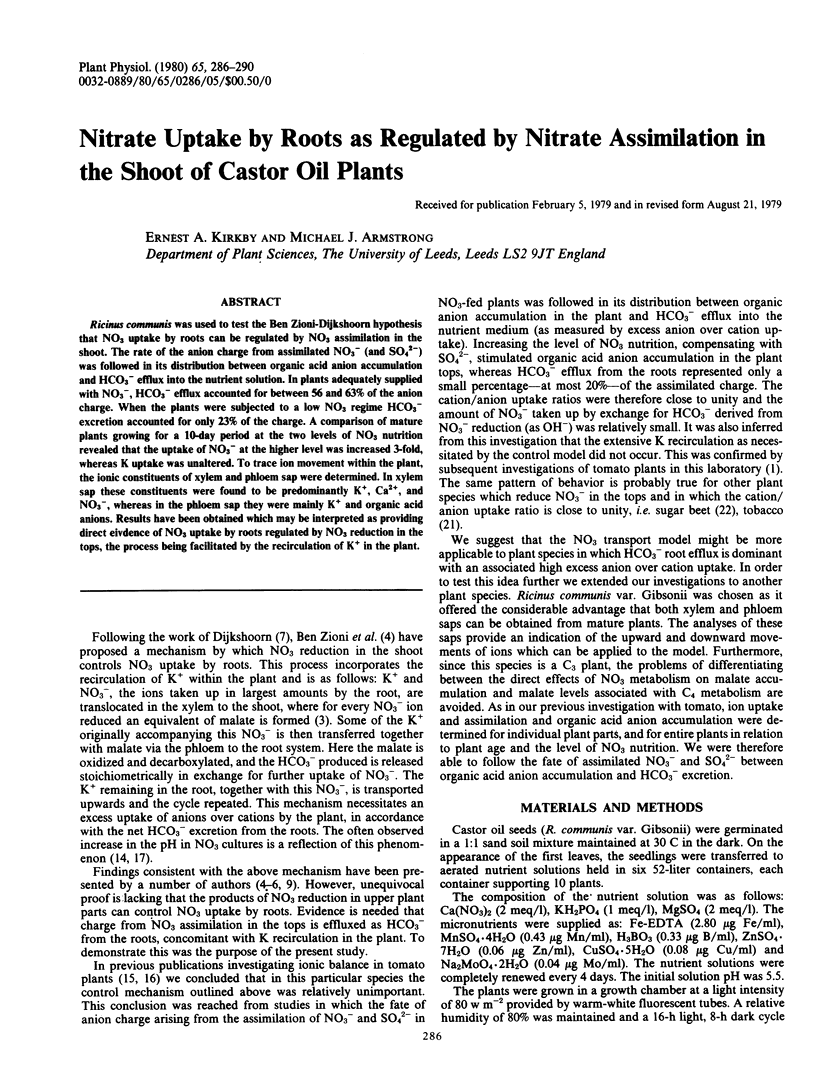
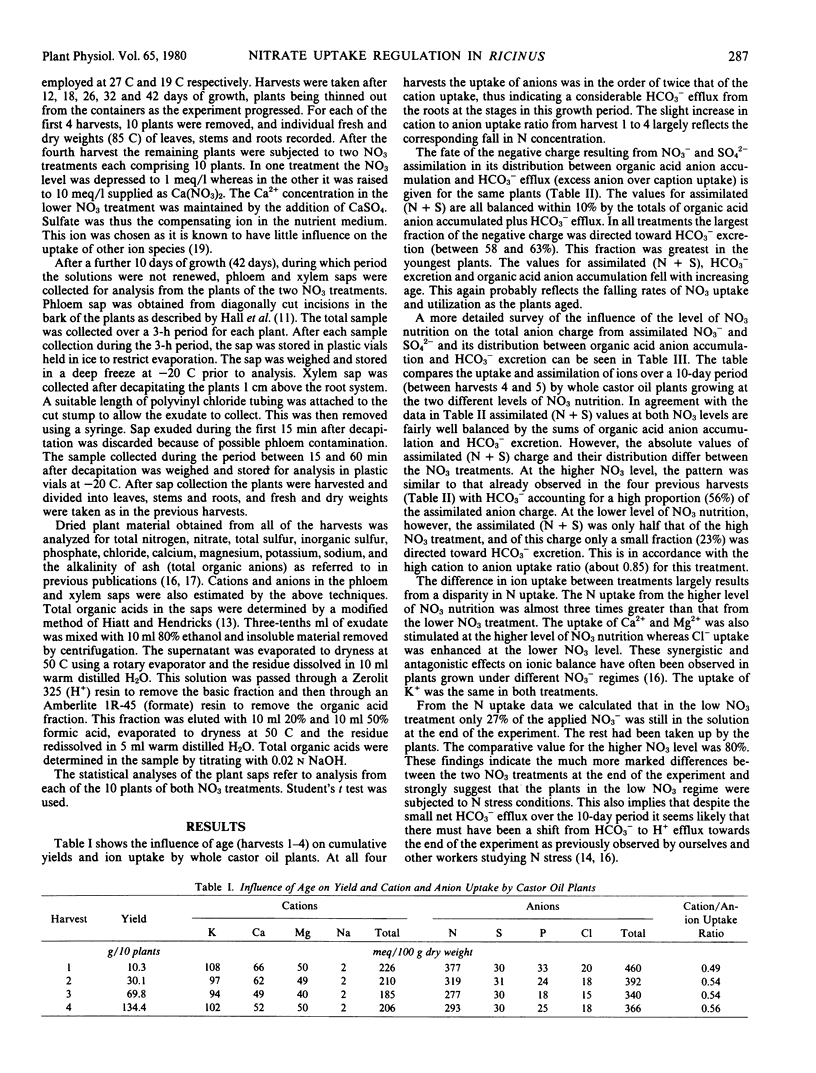
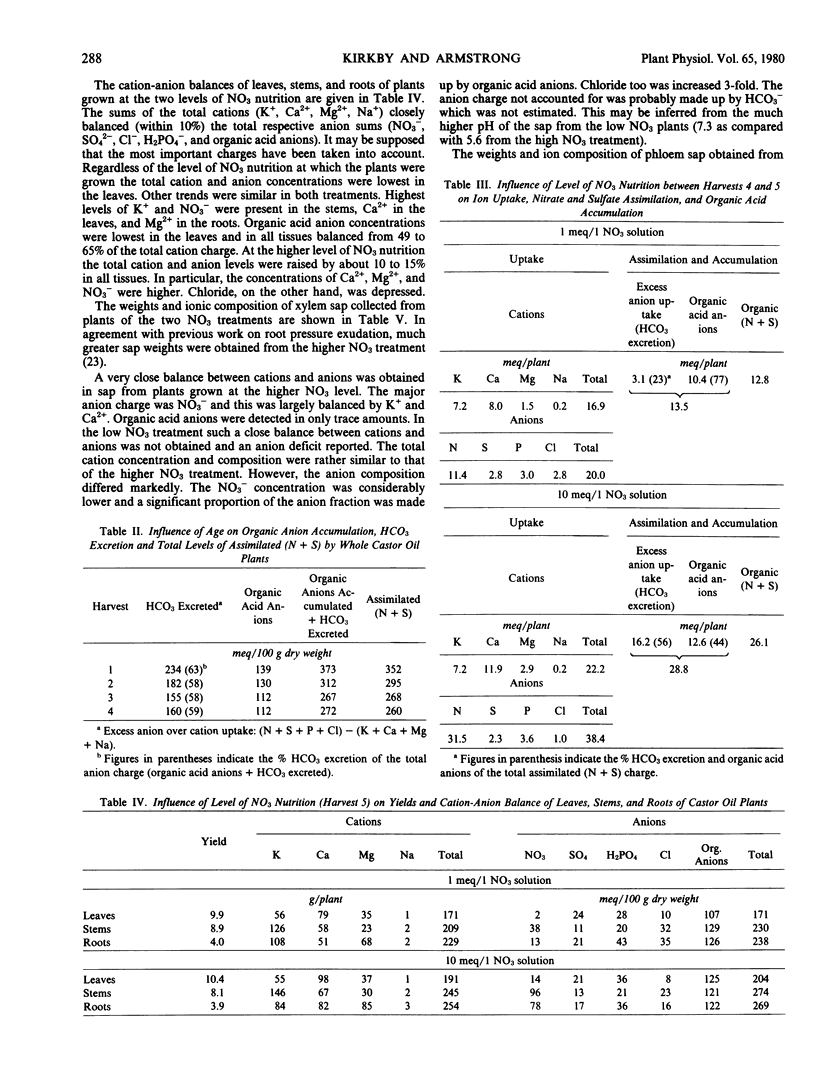
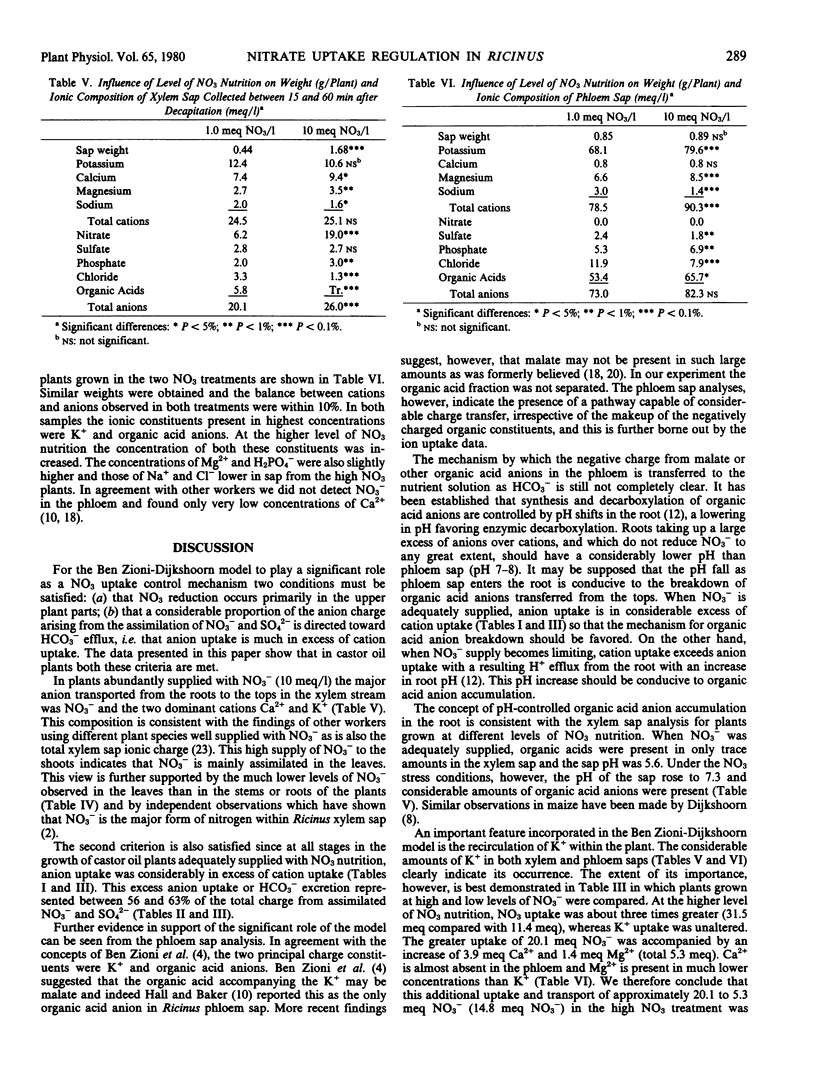
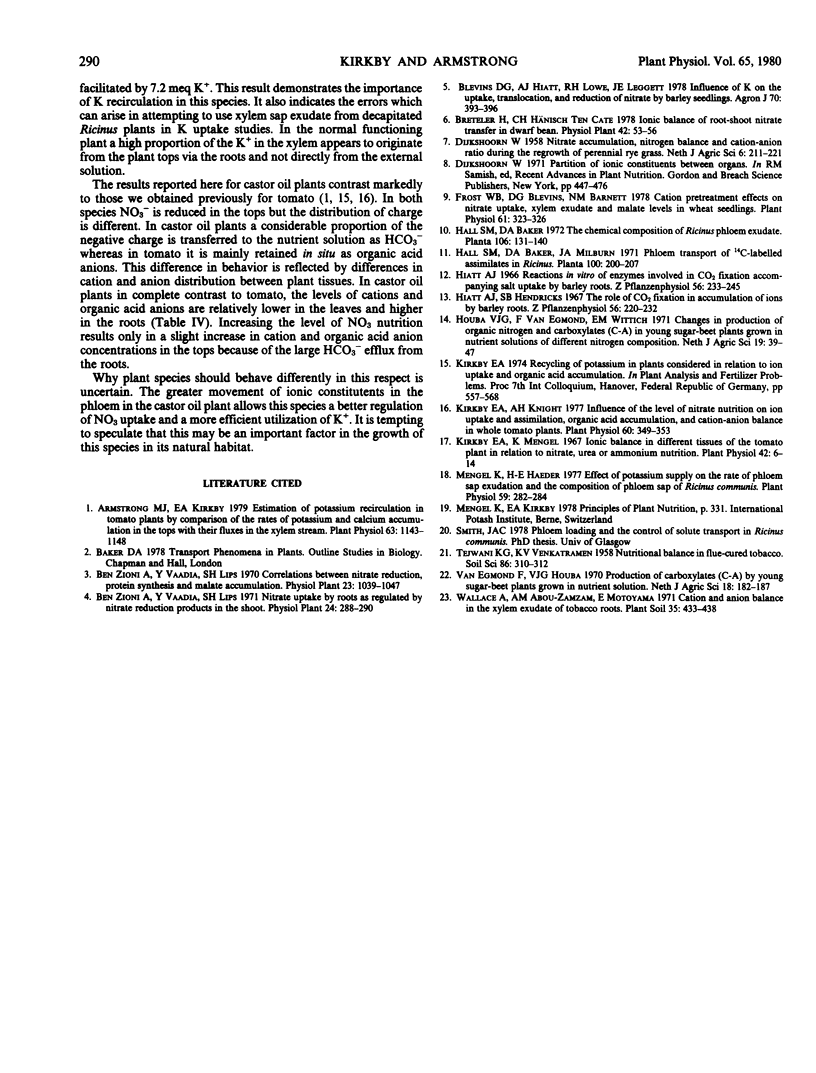
Selected References
These references are in PubMed. This may not be the complete list of references from this article.
- Armstrong M. J., Kirkby E. A. Estimation of potassium recirculation in tomato plants by comparison of the rates of potassium and calcium accumulation in the tops with their fluxes in the xylem stream. Plant Physiol. 1979 Jun;63(6):1143–1148. doi: 10.1104/pp.63.6.1143. [DOI] [PMC free article] [PubMed] [Google Scholar]
- Frost W. B., Blevins D. G., Barnett N. M. Cation pretreatment effects on nitrate uptake, xylem exudate, and malate levels in wheat seedlings. Plant Physiol. 1978 Mar;61(3):323–326. doi: 10.1104/pp.61.3.323. [DOI] [PMC free article] [PubMed] [Google Scholar]
- Kirkby E. A., Knight A. H. Influence of the level of nitrate nutrition on ion uptake and assimilation, organic Acid accumulation, and cation-anion balance in whole tomato plants. Plant Physiol. 1977 Sep;60(3):349–353. doi: 10.1104/pp.60.3.349. [DOI] [PMC free article] [PubMed] [Google Scholar]
- Kirkby E. A., Mengel K. Ionic balance in different tissues of the tomato plant in relation to nitrate, urea, or ammonium nutrition. Plant Physiol. 1967 Jan;42(1):6–14. doi: 10.1104/pp.42.1.6. [DOI] [PMC free article] [PubMed] [Google Scholar]
- Mengel K., Haeder H. E. Effect of Potassium Supply on the Rate of Phloem Sap Exudation and the Composition of Phloem Sap of Ricinus communis. Plant Physiol. 1977 Feb;59(2):282–284. doi: 10.1104/pp.59.2.282. [DOI] [PMC free article] [PubMed] [Google Scholar]


